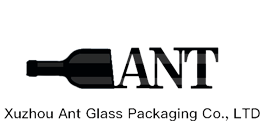The materials used to make glass include approximately 70% sand along with a specific mixture of soda ash, limestone and other natural substances – depending on what properties are desired in the batch.
When manufacturing soda lime glass, crushed, recycled glass, or cullet, is an additional key ingredient. The amount of cullet used in the batch of glass varies. Cullet melts at a lower temperature which reduces energy consumption and requires fewer raw materials.
Borosilicate glass should not be recycled because it is heat-resistant glass. Because of its heat resistant properties, borosilicate glass will not melt at the same temperature as Soda Lime glass and will alter the viscosity of the fluid in the furnace during the re-melt stage.
All of the raw materials for making glass, including cullet, are stored in a batch house. They are then gravity fed into the weighing and mixing area and finally elevated into batch hoppers that supply the glass furnaces.

Methods for Producing Glass Containers:
Blown Glass is also known as molded glass. In creating blown glass, gobs of heated glass from the furnace are directed to a molding machine and into the cavities where air is forced in to produce the neck and general container shape. Once they are shaped, they are then known as a Parison. There are two distinct forming processes to create the final container:
Blown Glass Forming Processes
Blow and Blow Process – compressed air is used to form the gob into a parison, which establishes the neck finish and gives the gob a uniform shape. The parison is then flipped to the other side of the machine, and air is used to blow it into its desired shape.
Press and Blow Process- a plunger is inserted first, air then follows to form the gob into a parison.
At one point this process was typically used for wide mouth containers, but with the addition of a Vacuum Assist Process, it can now be utilized for narrow mouth applications as well.
Strength and distribution is at its best in this method of glass formation and has allowed manufacturers to “lightweight” common items such as beer bottles to conserve energy.
Conditioning – no matter the process, once the blown glass containers are formed, the containers are loaded into an Annealing Lehr, where their temperature is brought back up to approximately 1500° F, then reduced gradually to below 900° F.
This reheating and slow cooling eliminates the stress in the containers. Without this step, the glass would easily shatter.
Surface Treatment – external treatment is applied to prevent abrading, which makes the glass more prone to breakage. The coating (usually a polyethylene or tin oxide based mixture) is sprayed on and reacts on the surface of the glass to form a tin oxide coating. This coating prevents the bottles from sticking to one another to reduce breakage.
Tin oxide coating is applied as a hot end treatment. For cold end treatment, the temperature of the containers is reduced to between 225 and 275° F before application. This coating can be washed off. Hot End treatment is applied before the annealing process. Treatment applied in this fashion actually reacts to the glass, and cannot be washed off.
Internal Treatment – Internal Fluorination Treatment (IFT) is the process that makes Type III glass into Type II glass and is applied to the glass to prevent bloom.
Quality Inspections – Hot End Quality Inspection includes measuring bottle weight and checking bottle dimensions with go no-go gauges. After leaving the cold end of the lehr, bottles then pass through electronic inspection machines that automatically detect faults. These include, but are not limited to: wall thickness inspection, damage detection, dimensional analysis, sealing surface inspection, side wall scanning and base scanning.
Post time: Oct-29-2019

